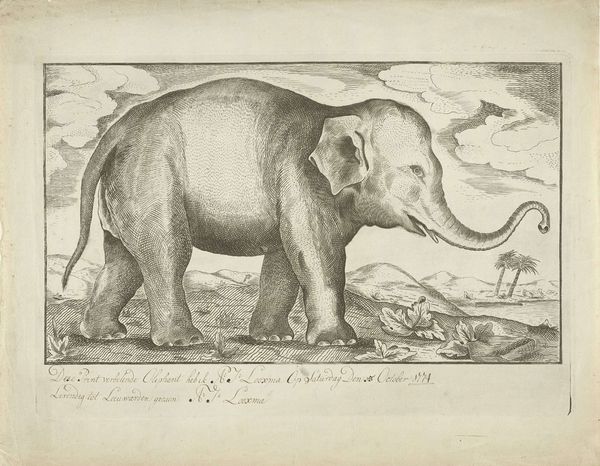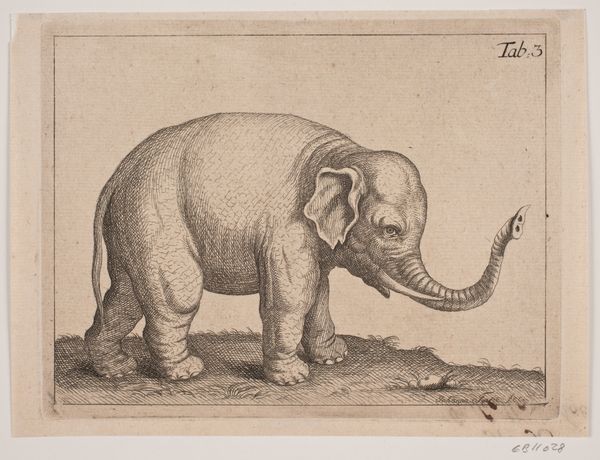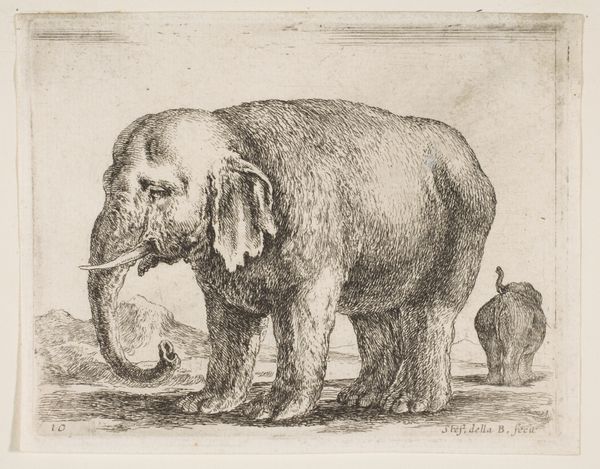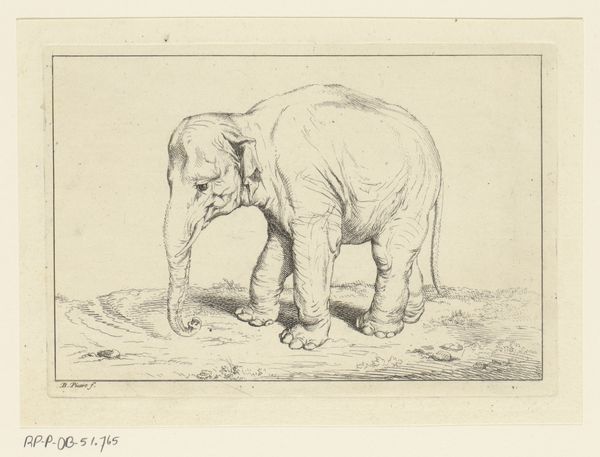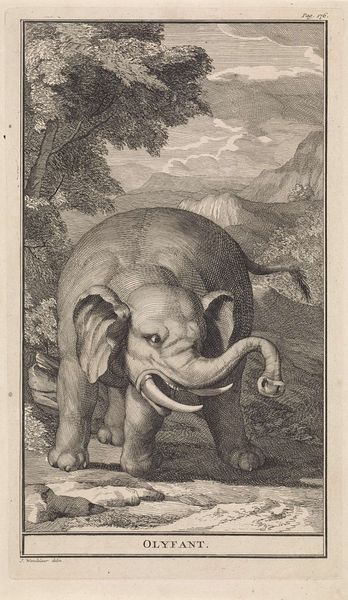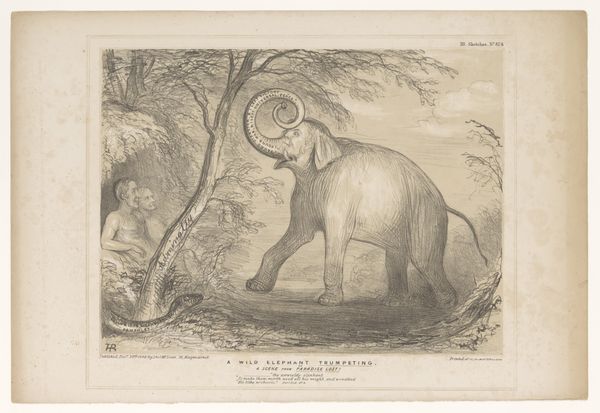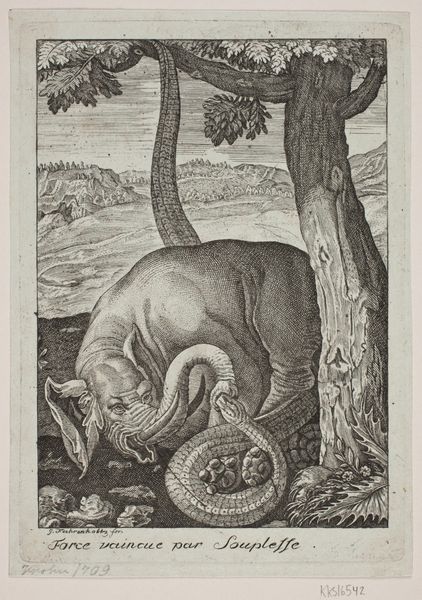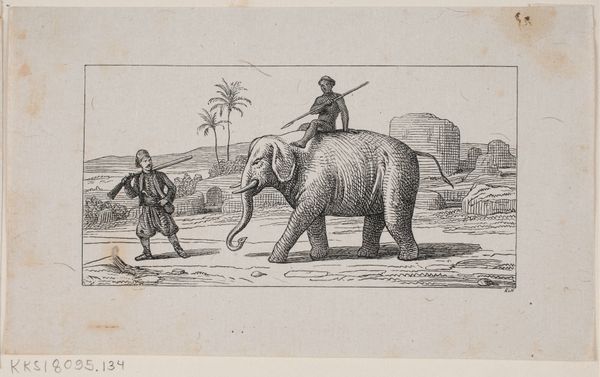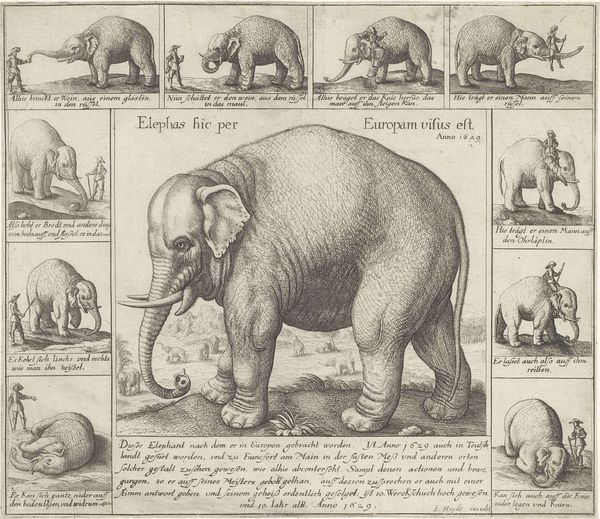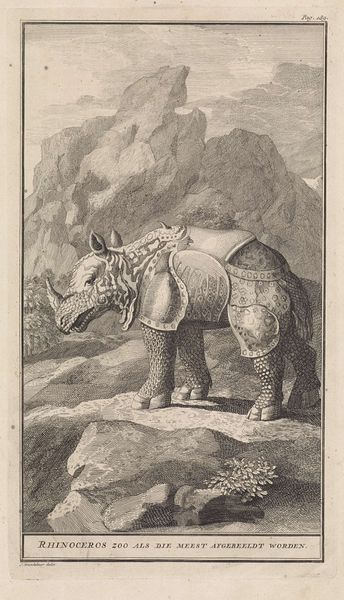
print, engraving
#
animal
# print
#
old engraving style
#
landscape
#
line
#
engraving
#
realism
Dimensions: height 204 mm, width 167 mm
Copyright: Rijks Museum: Open Domain
Curator: This print, entitled "Olifant," was created by Barent de Bakker between 1762 and 1804. It's an engraving rendered with meticulous lines. The work resides here at the Rijksmuseum. Editor: It's fascinating how the artist captured the elephant's textured skin through simple lines. I find the backdrop of vaguely Asian-inspired architecture peculiar. It adds to the sense of colonial encounters and the exoticisation of nature. Curator: Exactly! The engraver’s technical prowess gives the elephant weight, but also underscores the complicated role such imagery played in scientific and colonial projects. Prints like these circulated knowledge – or perceptions – about the natural world. Editor: But it also strikes me how de Bakker titled this "L'Elephant Femelle"—the female elephant. Is it an assertion of power? Does that detail contribute to our modern-day discussions around identity and representation, particularly thinking about gender within non-human animal studies? Curator: Certainly, the choice of “femelle” might influence how viewers relate to the subject. While de Bakker’s focus could have been zoological accuracy, naming also brings to bear prevailing gendered conceptions and scientific categorizations. It inevitably participates in the societal structures of seeing and knowing. Editor: Knowing that images like these may have played a part in promoting stereotypes, or were even tied to oppressive political and colonial circumstances, can transform how we engage with the art, particularly from a feminist lens. I am very curious, for instance, to what extend female elephants where ever presented as a threat to imperial rule. Curator: I agree entirely. Engaging with these issues moves us from mere aesthetic appreciation toward a critical understanding of historical power dynamics. So a closer look shows just how art reflects society's politics. Editor: Definitely. Next time you see it, challenge yourselves to think about the contexts and meanings embedded within this powerful and detailed piece of work. Curator: Indeed. Reflect on what stories they convey, and how these stories contribute to discussions that influence our collective values and awareness.
Comments
No comments
Be the first to comment and join the conversation on the ultimate creative platform.
